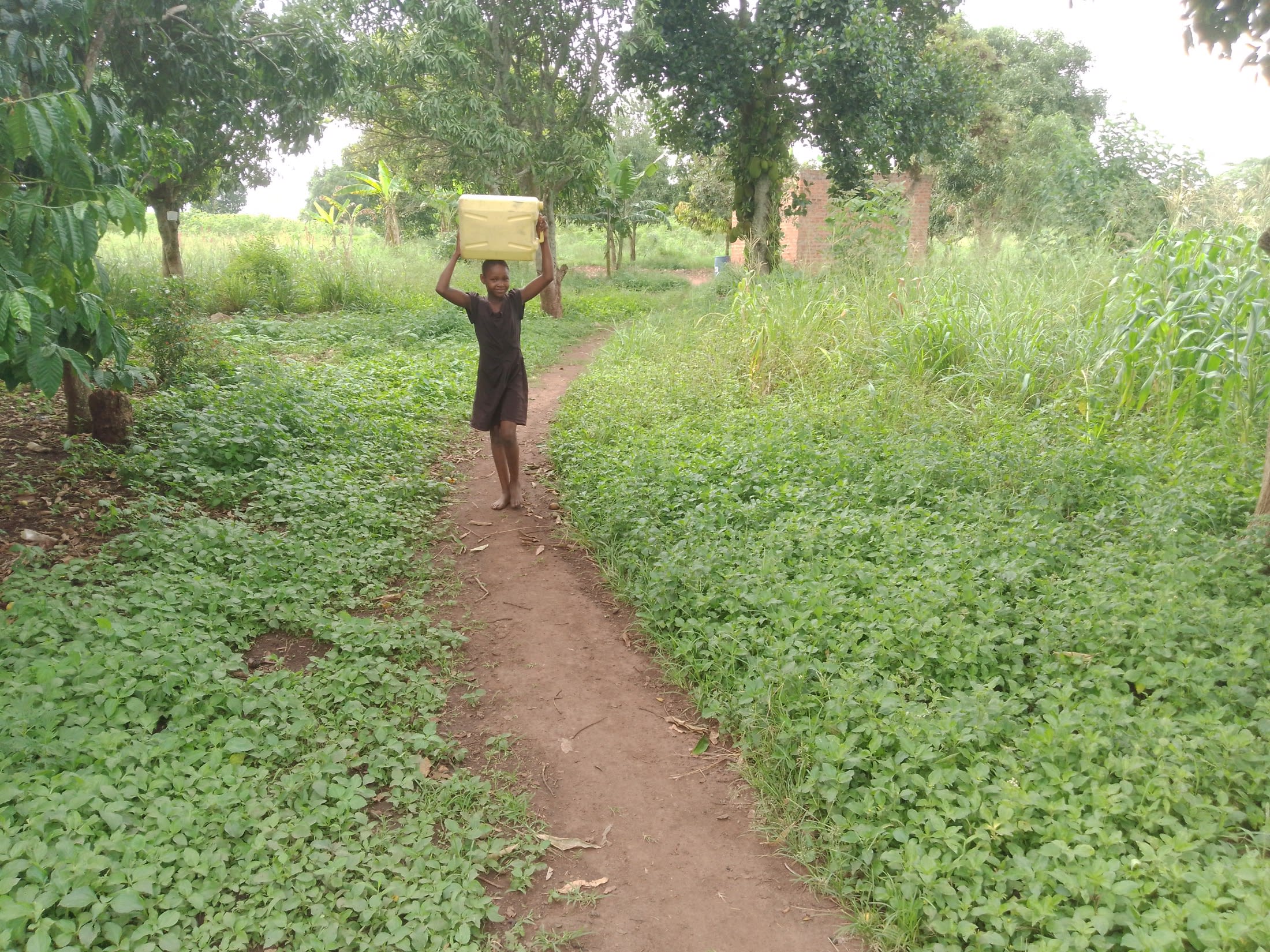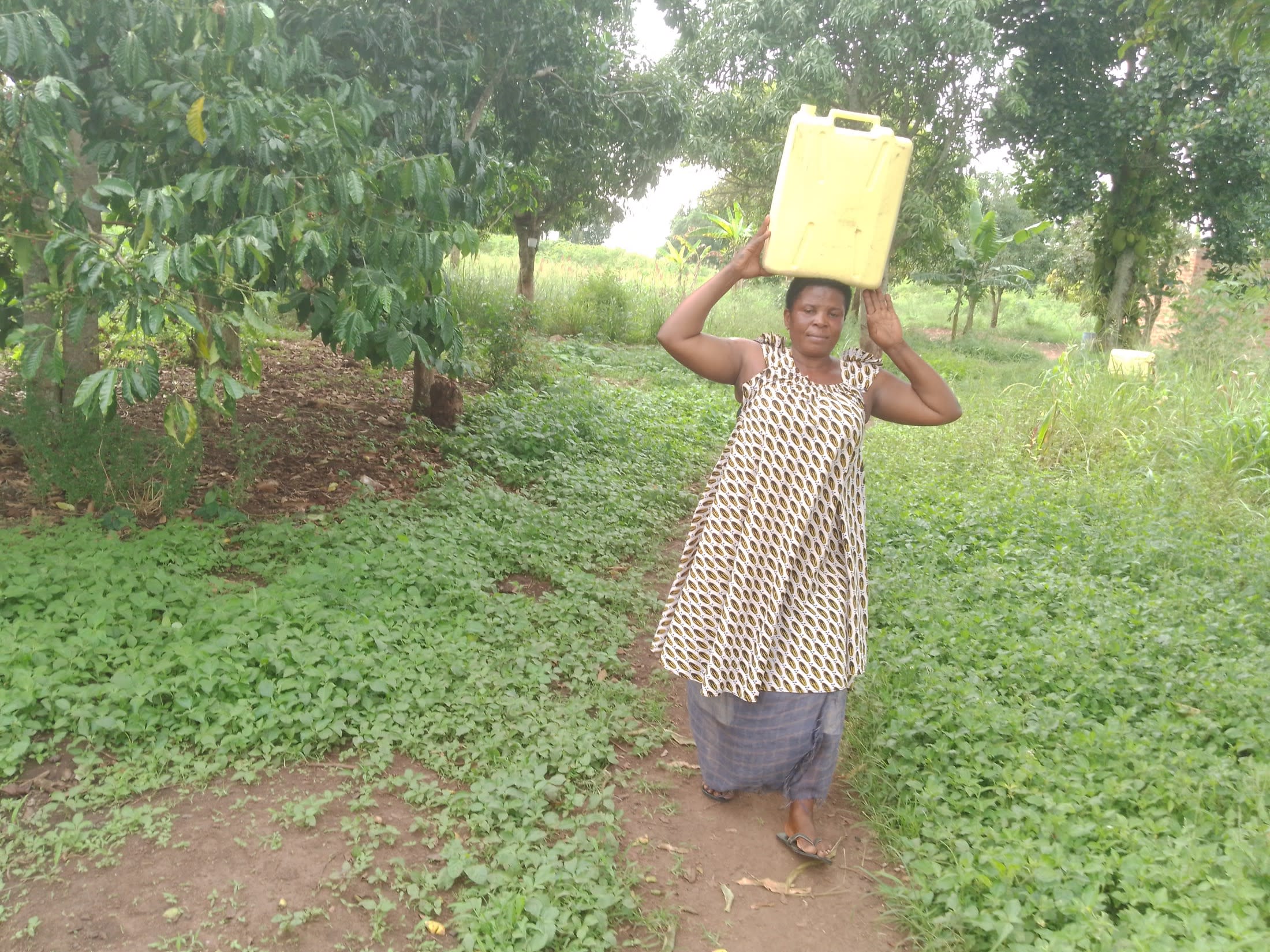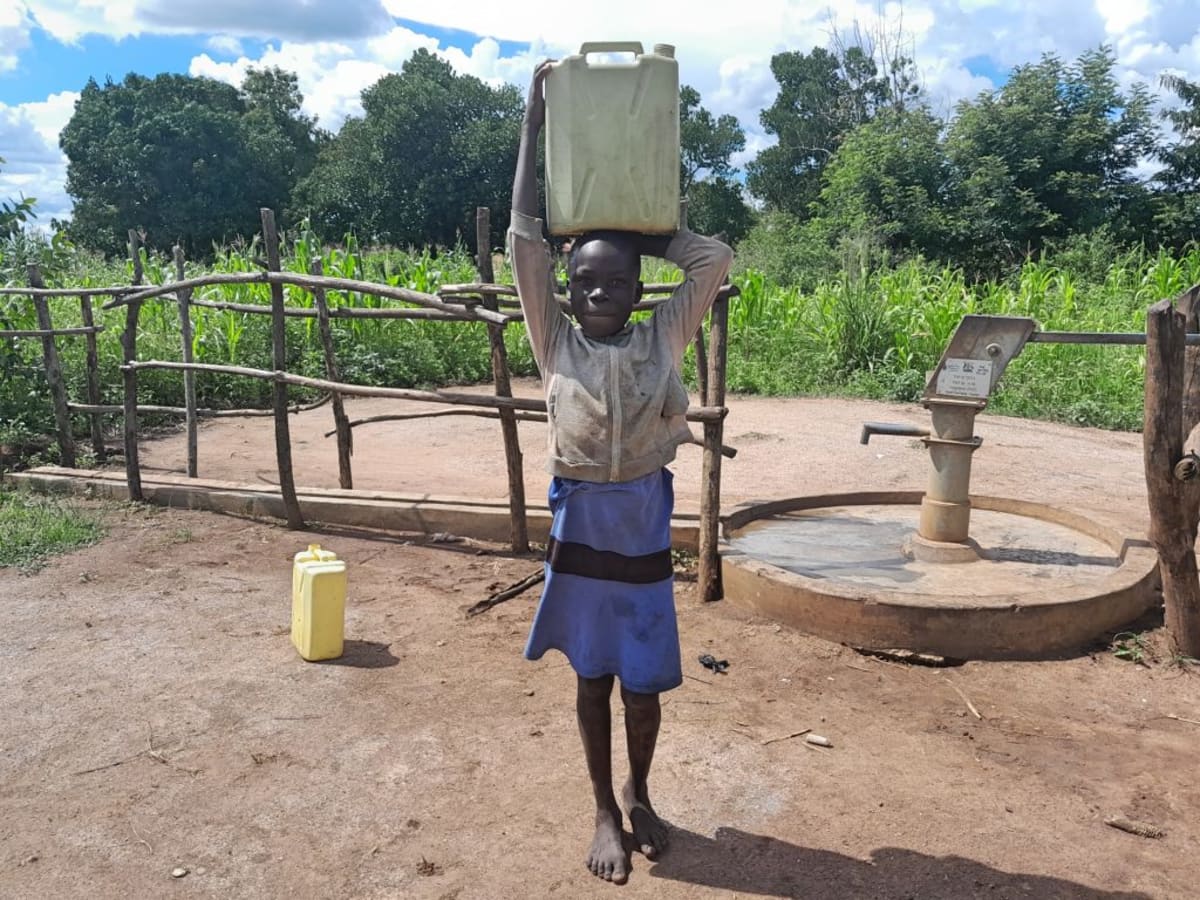In Kyandangi, people waste far too much valuable time they could use for other essential things walking to collect water. Community members spend a minimum of 30 minutes, some as much as one hour, each way to collect water from a community well. Most people waste several hours a day to have water to drink and water for basic daily chores like cooking and watering their crops.

Bridget M., 10, in the photo above carrying water, shared what it is like for her to walk the long distance to the well but face persistent opposition. She noted many adults at the water source take advantage of her, even if she arrived first. She's pushed away and sometimes beaten by those who are impatient. Bridget accurately stated, "This violates our rights as children."
When people do not have the time or energy to walk the long distance to the well, they turn to questionable open water sources that are contaminated. These water holes provide drinking water, but are also where people bathe, do their laundry, and water their animals, leaving the water full of contaminants. Community members risk contracting water-related diseases whenever they ingest the water.

When Dorcus Nyangoma, a 48-year-old farmer (in the photo above), was asked about how the current situation affects her. She said she finds hardship in fetching water because of the distance. Since her kids are young, they can't help fetch water, and she has no bicycle to support her in the task. Her other work for the day is often neglected because water must take priority.
Water scarcity in this region severely affects people's daily schedules since most people are farmers and need water to produce crops that sustain their livelihoods. It also affects community members' basic hygiene since they lack the necessary water to launder clothes and bathe regularly.
The people of Kyandangi will significantly benefit from having their own nearby well. It will save them large amounts of time and energy, and life is sure to improve.
Here’s what we’re going to do about it:
New Borehole
This new borehole is an exciting opportunity for this community! We work with the community to determine the best possible sites for this well.
We conducted a hydrogeological survey and the results indicated the water table is an ideal candidate for a borehole well. Due to a borehole well's unique ability to tap into a safe, year-round water column, it will be poised to serve all of the water needs for this community, even through the dry months.
Community members will help collect the needed construction materials such as sand, rocks, and water for mixing cement. They will also provide housing and meals for the work team, in addition to providing local laborers. We will complement their materials by providing an expert team of artisans and drilling professionals, tools, hardware, and the hand-pump. Once finished, water from the well will then be used by community members for drinking, handwashing, cooking, cleaning, and much more.
Training
Training's main objectives are the use of latrines and observing proper hygiene practices since these goals are inherently connected to the provision of clean water. Open defecation, water storage in unclean containers and the absence of hand-washing are all possible contaminants of a household water supply. Each participating village must achieve Open Defecation Free status (defined by one latrine per household) prior to the pump installation for this borehole well.
This social program includes the assignment of one Community Development Officer (CDO) to each village. The CDO encourages each household to build an ideal homestead that includes: a latrine, a handwashing facility, a separate structure for animals, a rubbish pit and a drying rack for dishes.
We also implement the Community-Led Total Sanitation (CLTS) approach with each of our village partners. This aims to improve the sanitation and hygiene practices and behaviors of a village. During these sessions, village leaders naturally emerge and push the community to realize that the current practices of individual households – particularly the practice of open defecation – are not only unhealthy, but affect the entire village. CLTS facilitates a process in which community members realize the negative consequences of their current water, sanitation and hygiene behaviors and are inspired to take action. Group interactions are frequent motivators for individual households to build latrines, use them, and demand that other households do the same.
Improved Sanitation
The aim is that all households own an improved latrine. Many households do not use a latrine but use the bush. Due to open defecation, feces are spread all over the village. This leads to waterborne diseases and contamination of groundwater and surface water. Our aim is that the community is able to live a healthy life free of preventable diseases. We endeavor that at the end of our presence in the community, people will have both access to sustainable, clean water and access to sanitation. We have now organized families to form digging groups for latrine construction, and empowered them with tools to use.

 Borehole Well and Hand Pump
Borehole Well and Hand Pump
 Rehabilitation Project
Rehabilitation Project



























